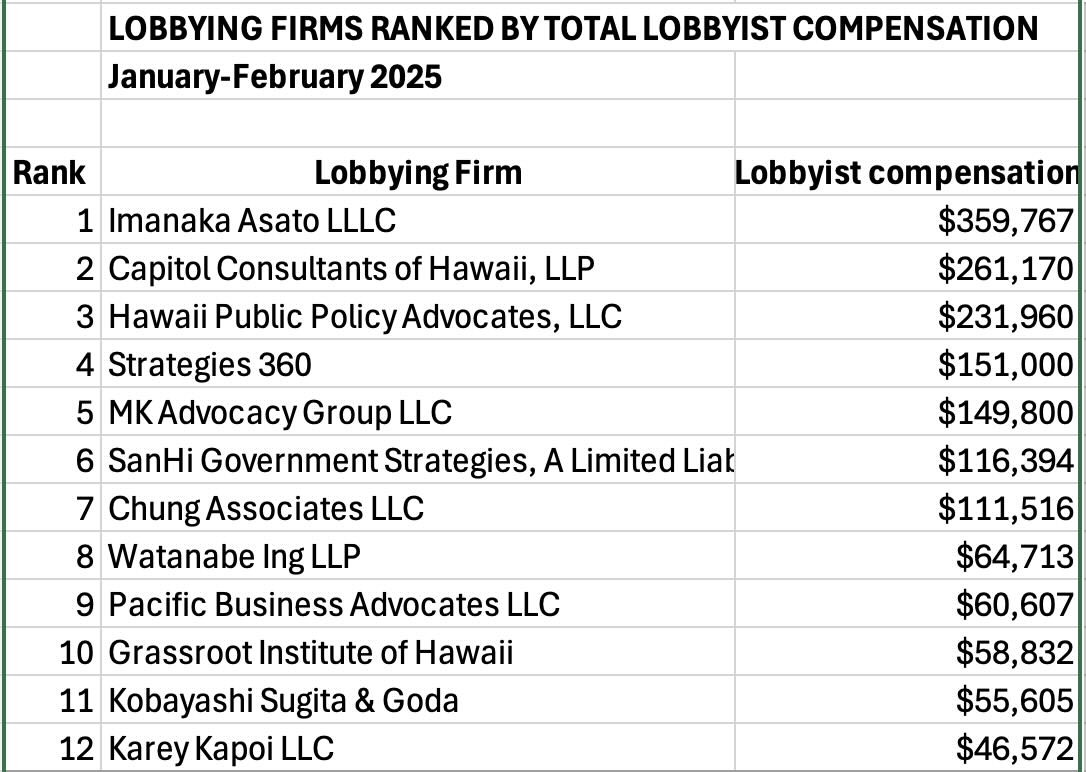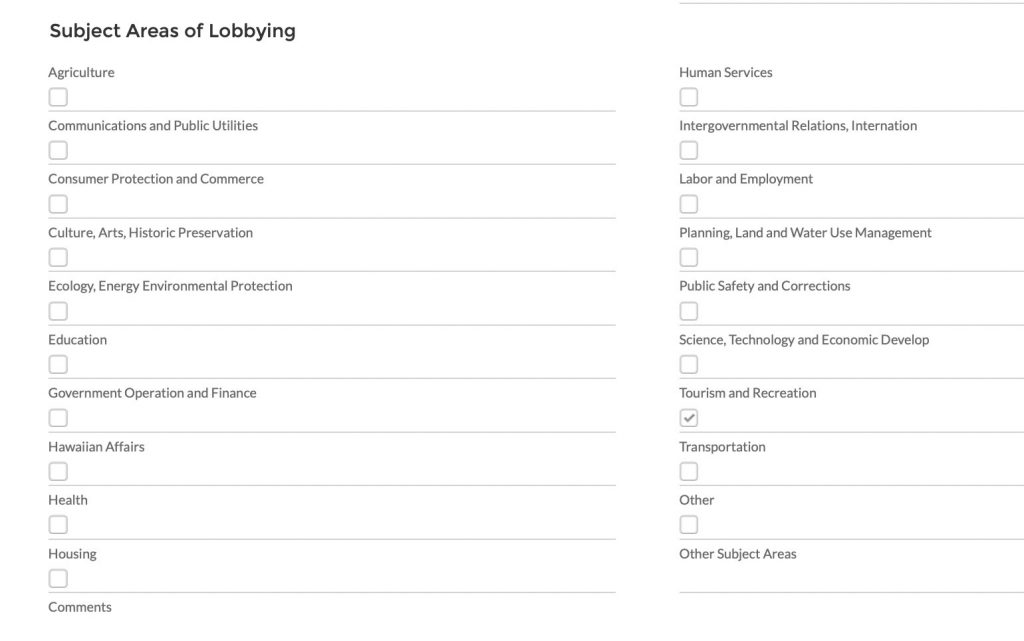On Monday morning I decided to take a look at lobbyists’ activity during the current legislative session, digging into the online data posted by the State Ethics Commission.
The data come from lobbyist registrations, and expenditure reports.
I thought it could be an easy and quick post. But I’m sitting here 24 hours later trying to get at least a preliminary post done with the basic information.
State law requires each lobbyist to register within five days of becoming a lobbyist. Registration includes reporting contact information, the name and contact info of any person or organization the lobbyist is employed by, or on whose behalf they will lobby.
Three reports of expenditures and (less often) contributions must then be filed over the course of the year. The first two reports cover the bulk of the annual legislative session. The report due on March 31 cover the January-February period. The next report, due May 31, covers the period from March 1 through April 30. The final report, due January 31 of the following year, covers the period from May 1 through the end of December. The lists below are based on the reports that were due on March 31, 2025.
After some browsing, I ended up with three “big picture” snapshots–the top individual lobbyists ranked by their reported compensation from all employers or clients, the top lobbying firms ranked by the total compensation paid to the lobbyists they employ, and the top organizations represented by lobbyists (again ranked by compensation paid to lobbyists).
A total of 512 individual lobbyists registered for the 2025-2026 biennium. The list ranked by compensation is very top-heavy, with only 14 (2.8%) receiving more than $50,000 in compensation from their employers or clients during the reporting period (January 1 through February 28). In total, the top 14 highest earning lobbyists represent about one in five of all organizations hiring lobbyists, and accounted for 39% of total lobbying fees paid.
At the top of the list, and far ahead of the next highest earning lobbyist, is Michael Iosua, an attorney with the firm of Imanaka Asato LLLC. He represents clients through his firm, and also through an independent lobbying firm, MK Advocacy Group LLC, co-owned with Kimberley Yoshimoto, also an attorney with Imanaka Asato. The two are listed as partners in the Imanaka firm’s Government Relations Law group. Iosua, a former UH football player, was a member of the Stadium Authority and was required to file a financial disclosure report, which reported ownership of 50% of MK Advocacy Group.
In the second spot, with just over half the lobbyist fees earned by Iosua, is Ann Chung, and her company, Chung Associates LLC. Although using the “associates” label, Chung is the sole lobbyist registered with the company. She reported seven clients, including the client that paid the highest amount of lobbyist compensation during the two month period. That client, Waikai Consulting LLC, reported spending $65,000, but is kind of a mystery. State business registration records have no company by that name licensed to do business in the state, either as a Hawaii company or a foreign firm doing business here.
According to Chung’s ethics commission filings, Waikai Consulting LLC used the same Laukahi Street address that serves as Chung’s residence and the business address of Chung Associates.
After getting this far, I was running out of time. So what follows is quite sparse, although there are lots of interesting questions to be pursued about what’s shown in these data.
The next table lists the top lobbying firms, several of which employ more than one of the top ranked lobbyists. There are 275 organizations registered as employing lobbyists, but the top 12 firms control 51% of the total compensation paid.
The #1 firm, Imanaka Asato LLLC, employs three of the top paid lobbyists, including Iosua, Kimberly Yoshimoto, and Evan Oue.
The third list ranks the organizations represented by lobbyists according to the amount of lobbyist compensation they pay. While somewhat concentrated at the top, the spending is more evenly spread among the 425 organizations. About 5 percent of the organizations account for 20% of the total compensation paid.
Whew. Now I’m going to get this basic information posted for your review.





